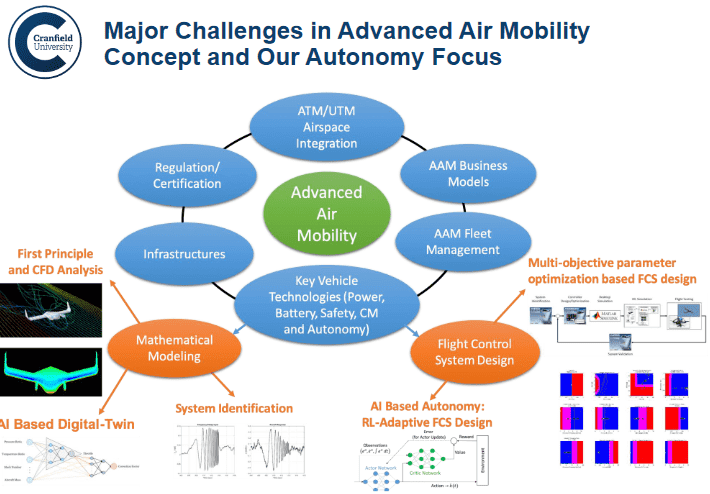Artificial Intelligence and Urban Air Mobility
UAM + AI = A Winning Combination?

In director Stanley Kubrick’s 1968 dystopian film, 2001: A Space Odyssey, Man (astronaut, Dr. Dave Bowman) and Machine (the spaceship’s computer system, the “heuristically programmed algorithmic computer system” aka HAL) face off over control of the ship and the astronaut’s fate. As HAL’s artificial intelligence (AI) system develops a “mind of its own,” HAL’s interests diverge from Dave’s needs.
This begs the question: What will happen when urban air mobility (UAM) meets AI? Neither are science fiction anymore; the challenge is here.
Dr. Peng Wei, an assistant professor at George Washington University’s School of Engineering and Applied Science, is pondering such questions along with colleagues from MIT’s Lincoln Lab, the University of Texas at Austin, and Vanderbilt University. Dr. Wei is the principal investigator in a three-year, US$2.5MM study funded by the U.S.’s National Aeronautics and Space Administration’s (NASA’s) System-Wide Safety project.
Autopilot on Steroids
The lab Dr. Wei oversees is working on flight deck and ground-based automation and decision support tools to facilitate safe operations for emerging aircraft types. The work seeks to expand the application of AI and machine learning as they apply to air transportation, notably, UAM.
The risks to autonomous, electric-powered aircraft present perils to the aircraft, its mission, and the airspace in which they will operate. Challenges include everything from winds to propulsion component faults or degradations, to rogue aircraft that tries to hijack an eVTOL’s operating software, or GPS spoofing.
An autonomy fault, a motor/battery problem, or unexpected winds create the potential for collisions or conflicts. The increasing reliance on the internet and digital connectivity creates new safety challenges for industry and regulators alike.
“If a machine-learning algorithm makes a mistake in Facebook, TikTok, Netflix —that doesn’t matter too much because I was just recommended a video or movie I don’t like,” Dr. Wei explains. “But if a machine-learning algorithm mistake happens in a safety-critical application, such as aviation or autonomous driving, people may have accidents. There may be fatal results.”
In other words: the stakes are high. The question, Dr. Wei says, is “How do we detect that and how do other aircraft avoid those potential collisions or conflicts?”
The answer might lie in an incremental approach to the use of AI in UAM. Driverless cars might lead to successful small package or meal deliveries by drones which, in turn, might lead to larger cargo flights which could someday prompt autonomous passenger flights.
UAM: Cleared for Takeoff?
Meanwhile, researchers at the UK’s Cranfield University Centre for Autonomous and Cyber-Physical Systems are planning for the future by developing the Cranfield Global Research Airport to contemplate the challenges of UAM, including those posed by AI. The flight control system design, along with key vehicle technologies (such as battery, power, safety, configuration management, and autonomy) are just some of the hurdles UAM will need to overcome to succeed.
For learning-enabled, autonomous systems to achieve adoption, Cranfield’s scientists, indeed all the scientists working on UAM, face three challenges: building explainable AI, building trustworthy AI, and building computationally/physically tractable AI.
Developing adaptive flight controls and closed-loop reference model (CRM) adaptive systems, and CRM adaptive control systems will be critical.
It seems that AI and UAM are on flight paths that will overlap as we watch eVTOLs, hybrid VTOLs, and even hydrogen-powered VTOLs take to our skies. And, clearly, that, is no longer science fiction.
Want to continue to stay up-to-date about the latest developments in the eVTOL industry? Subscribe to AeroCar Journal now. It’s FREE (for a limited time)! Join us on Twitter for the latest news, analysis, and insight about the eVTOL industry. AeroCarJ


